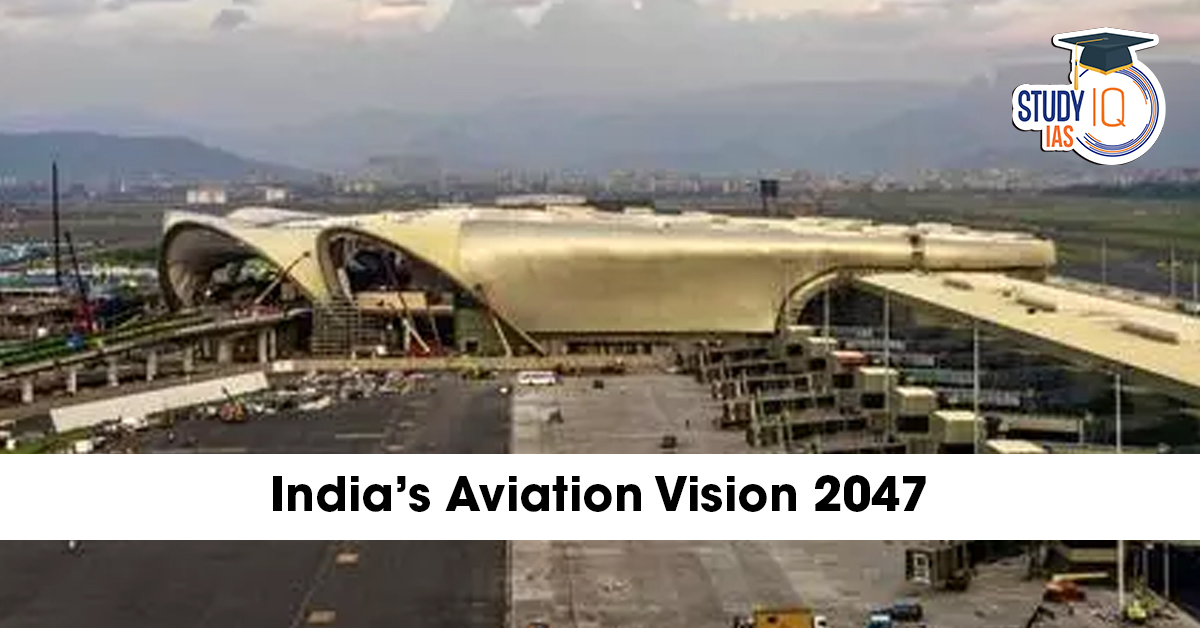Table of Contents
India is taking flight toward a new era of connectivity and economic growth. Under the Aviation Vision 2047, the Government of India has announced plans to nearly double the number of airports across the nation — from 163 in 2025 to over 350 by 2047. This vision is not just about infrastructure—it’s a roadmap to make India a global aviation powerhouse, supporting 25 million jobs and contributing significantly to India’s aspiration of becoming a $10 trillion economy by its 100th year of Independence.
India’s Aviation Growth Journey: From 74 to 350 Airports
Over the past decade, India’s civil aviation sector has undergone an extraordinary transformation.
-
In 2014, India had only 74 operational airports.
-
By 2025, this number has risen to 163.
-
The government now targets 350+ airports by 2047, marking a fourfold increase in three decades.
This growth reflects the strategic investments in aviation infrastructure and the success of flagship programs like UDAN (Ude Desh ka Aam Nagrik), which brought air travel to India’s smaller towns and remote regions.
Aviation as a Growth Engine of India’s $10 Trillion Economy
According to the International Civil Aviation Organisation (ICAO), investments in aviation have one of the highest economic multipliers. For every ₹1 invested, the sector generates ₹3 in economic output and supports six times as many jobs in associated industries.
By 2047, the Indian aviation sector is projected to:
-
Create 25 million direct and indirect jobs
-
Boost tourism, logistics, and manufacturing sectors
-
Strengthen FDI inflows, technology transfer, and Make in India initiatives
Currently, the sector supports 7.7 million jobs, including 369,000 direct jobs, and this number will rise exponentially with the expansion of airports, MRO hubs, and manufacturing facilities.
UDAN Scheme: Bridging India’s Sky Gaps
The UDAN (Ude Desh ka Aam Nagrik) scheme, launched in October 2016, stands at the heart of India’s regional connectivity revolution.
Key Achievements of UDAN:
-
649 routes operationalised
-
93 aerodromes connected (including 2 water aerodromes and 15 heliports)
-
3.23 lakh flights operated, carrying 1.56 crore passengers
-
12 airports/heliports in the North-East region
-
Enhanced connectivity to Andaman, Nicobar, and Lakshadweep Islands
Through UDAN, small cities like Darbhanga, Hubballi, Kullu, and Shillong are now connected to India’s aviation map, driving tourism, trade, and regional development.
The scheme has democratised air travel, making it affordable for the common citizen while boosting the local economy through increased mobility and investment.
Skyrocketing Passenger and Fleet Growth
India’s civil aviation market has witnessed rapid expansion over the past decade, becoming the third-largest domestic aviation market in the world.
Growth Projections:
-
Domestic air passenger traffic has grown at 10–12% annually.
-
Passenger traffic is expected to reach 1.1 billion by 2040, a sixfold increase.
-
Commercial aircraft fleet is projected to grow from 400 (2014) to 2,359 (by 2040).
The rise in middle-class income, digital ticketing, and low-cost carriers have all contributed to making air travel more accessible than ever before.
India as an Emerging Global Aviation Hub
With over 116 bilateral Air Service Agreements (ASAs), India is expanding its international footprint, allowing Indian carriers to fly to new destinations and attract foreign airlines to invest in the Indian market.
Key Growth Drivers:
-
Increasing FDI inflows into MRO, airport operations, and aircraft leasing
-
Growing Make in India initiatives for aircraft components and drones
-
Strengthening logistics and cargo operations
-
Development of new international airports like Jewar (Noida) and Navi Mumbai
The goal is to position India as a global hub for passenger and cargo transit, competing with major centers like Dubai, Singapore, and Doha.
Impact on Tourism and Regional Development
The expansion of airports and air routes has had a ripple effect on tourism and local economies.
According to NITI Aayog, domestic travellers accounted for 83% of total tourism spending in 2019, expected to reach 89% by 2028.
This trend showcases how government efforts—like UDAN and airport modernization programs—have:
-
Made air travel accessible to Tier-2 and Tier-3 cities
-
Boosted eco-tourism, religious tourism, and adventure travel
-
Attracted private investment in hotel and transport infrastructure
Aviation Vision 2047: The Road Ahead
India’s Aviation Vision 2047 focuses on sustainable growth, skill development, and technological innovation.
Core Objectives:
-
Expand airport infrastructure to 350+ operational airports.
-
Create 25 million jobs in aviation and allied sectors.
-
Promote green aviation through biofuels and carbon-neutral operations.
-
Enhance global connectivity via international partnerships.
-
Strengthen the UDAN network to connect 100% of districts with viable airports or heliports.
This vision aims to make air travel affordable, sustainable, and inclusive, ensuring that no citizen is left behind in India’s aviation success story.
Conclusion
India’s Aviation Vision 2047 represents a transformative roadmap that will redefine the country’s skies. By doubling the number of airports, investing in skill development, and embracing sustainable technologies, India is poised to become a global aviation leader.
With the synergy of initiatives like UDAN, Make in India, and Digital Sky, the aviation sector is set to play a pivotal role in India’s journey towards Viksit Bharat (Developed India) by 2047.


 UN @ 80: A Quarter of a Century Tribute ...
UN @ 80: A Quarter of a Century Tribute ...

 Son Meta Preference: Sex-Determination R...
Son Meta Preference: Sex-Determination R...




















